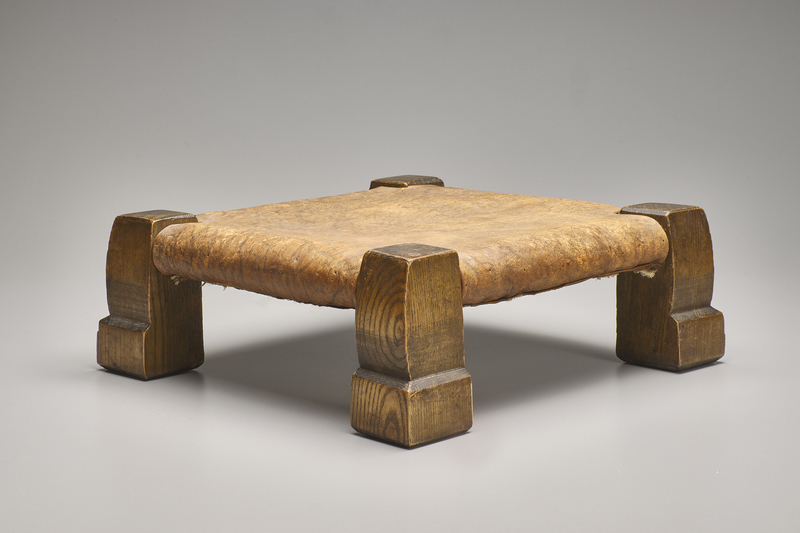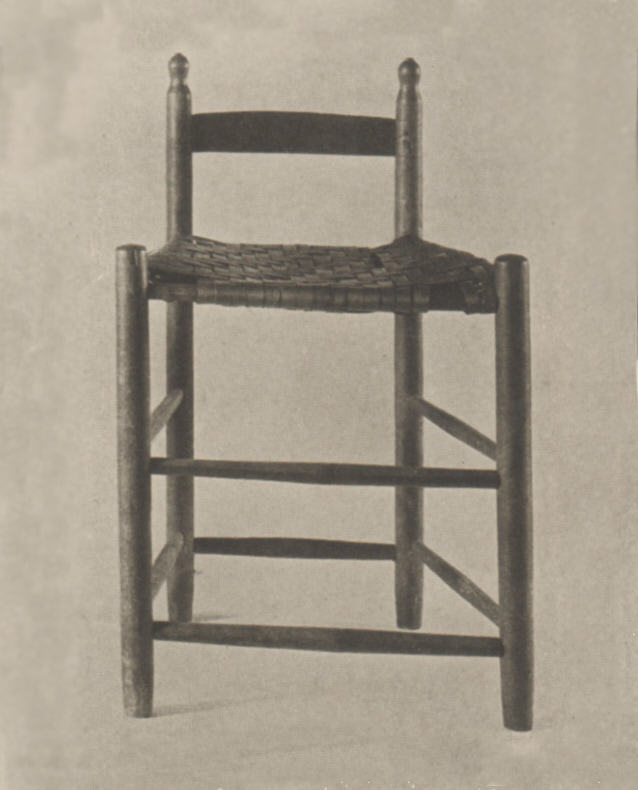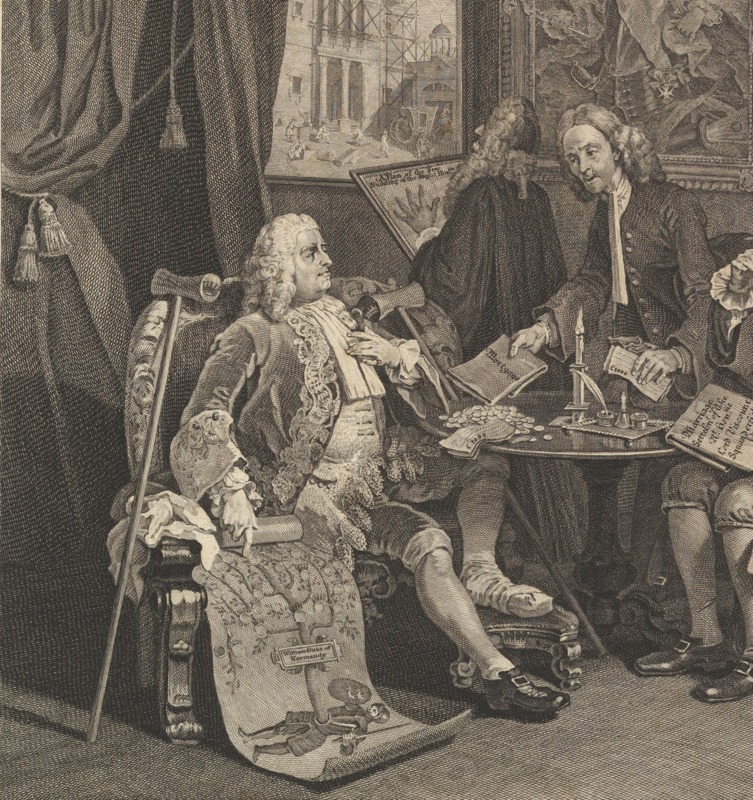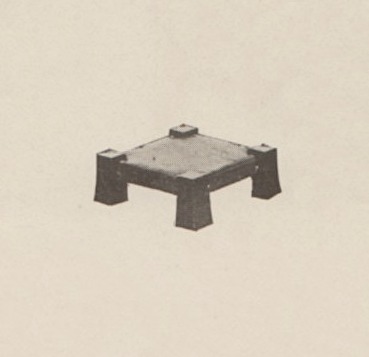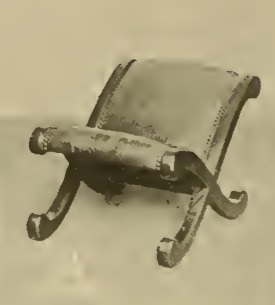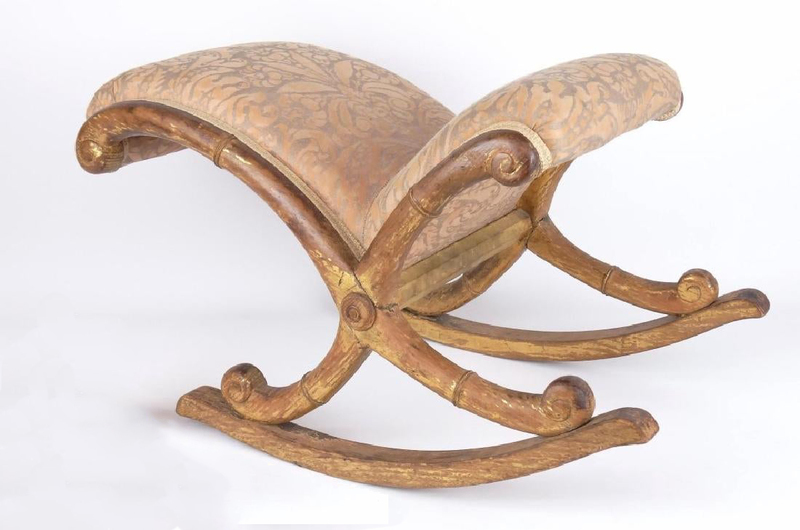Stool (no. 726)
Item
Title
Stool (no. 726)
Creator
United Crafts
Date
1901-02
Dimensions
5 x 12 1/2 x 12 1/2 inches
Medium
Black Ash, leather
Object No.
2018.19.1
Credit line
Gift of Gregg and Monique Seibert
Description
Although this form is sometimes referred to as a “monk stool,” there is no evidence that the term was ever used in the period to describe these foot stools. On the rare occasions when the term was used, as in Wallace Nutting’s Furniture of the Pilgrim Century 1620-1720, it was used to describe a tall stool with a low back or a “spinner’s chair,” forms that were not popular in the Arts and Crafts movement in general, or produced by Stickley specifically (fig. 2).
A better precedent for the low foot stool that Stickley created is a “gout stool,” a form popularized in the Eighteenth Century that was designed to bring relief–through elevation–of the pain and swelling that were symptoms of this disease (fig. 3). Typically associated with the wealthy, who could afford to eat the types of rich foods that exacerbated the condition, the gout stool itself was an indicator of class as owning a specialized piece of furniture was a luxury only available to the wealthy. While not every one of Stickley’s foot stools hearkens back to this form, the low models like nos. 726 and 302 clearly relate to this exemplar (fig. 4). Foot Stool (no. 389), produced from about 1905-10, is Stickley’s most literal iteration of the form, and directly relates to Victorian gout stools (figs. 5 and 6).
A better precedent for the low foot stool that Stickley created is a “gout stool,” a form popularized in the Eighteenth Century that was designed to bring relief–through elevation–of the pain and swelling that were symptoms of this disease (fig. 3). Typically associated with the wealthy, who could afford to eat the types of rich foods that exacerbated the condition, the gout stool itself was an indicator of class as owning a specialized piece of furniture was a luxury only available to the wealthy. While not every one of Stickley’s foot stools hearkens back to this form, the low models like nos. 726 and 302 clearly relate to this exemplar (fig. 4). Foot Stool (no. 389), produced from about 1905-10, is Stickley’s most literal iteration of the form, and directly relates to Victorian gout stools (figs. 5 and 6).
Since the discovery of the cache of furniture, there has been some debate about the species of wood used in their construction. Initially believed to be American chestnut, this was subsequently switched to ash. Analysis of the end grain of the wood in this stool, undertaken in early 2021, demonstrates that is Black Ash (Fraxinus nigra).
Associated names
Gustav Stickley
Provenance
Purchased, en suite, by an undisclosed buyer, ca. 1901, then by descent. Dalton’s American Decorative Arts and Antiques (September 2001). Cathers and Dembrosky (by 2002). Gregg and Monique Seibert (2002).

